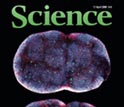|

Press Release 09-074
"Instant On" Computing

Materials researchers say rebooting soon may be a thing of the past
April 17, 2009
The ferroelectric materials found in today's "smart cards" used in subway, ATM and fuel cards soon may eliminate the time-consuming booting and rebooting of computer operating systems by providing an "instant-on" capability as well as preventing losses from power outages. Researchers supported by a National Science Foundation (NSF) nanoscale interdisciplinary research team award and three Materials Research Science and Engineering Centers at Cornell University, Penn State University and Northwestern University recently added ferroelectric capability to material used in common computer transistors, a feat scientists tried to achieve for more than half a century. They reported their findings in the April 17 journal Science. Ferroelectric materials provide low-power, high-efficiency electronic memory. Smart cards use the technology to instantly reveal and update stored information when waved before a reader. A computer with this capability could instantly provide information and other data to the user. Researchers led by Cornell University materials scientist Darrell Schlom took strontium titanate, a normally non-ferroelectric variant of the ferroelectric material used in smart cards, and deposited it on silicon--the principal component of most semiconductors and integrated circuits--in such a way that the silicon squeezed it into a ferroelectric state. "It's great to see fundamental research on ordered layering of materials, or epitaxial growth, under strained conditions pay off in such a practical manner, particularly as it relates to ultra-thin ferroelectrics" said Lynnette Madsen, the NSF program director responsible for the Nanoscale Interdisciplinary Research Team award. The result could pave the way for a next-generation of memory devices that are lower power, higher speed and more convenient to use. For everyday computer users, it could mean no more waiting for the operating system to come online or to access memory slowly from the hard drive. "Several hybrid transistors have been proposed specifically with ferroelectrics in mind," said Schlom. "By creating a ferroelectric directly on silicon, we are bringing this possibility closer to realization." More research is needed to achieve a ferroelectric transistor that would make "instant on" computing a reality, but having the materials in direct contact, free of intervening reaction layers, is an important step. The paper's first author, Maitri P. Warusawithana, is a postdoctoral associate in Schlom's lab. The research team also includes scientists at the National Institute of Standards and Technology, Motorola Corp., Ames Laboratory and Intel Corp. Along with NSF, the Office of Naval Research and the Department of Energy funded the research.
-NSF-

Media Contacts
Bobbie Mixon, NSF (703) 292-8485 bmixon@nsf.gov
Program Contacts
Lynnette D. Madsen, NSF (703) 292-4936 lmadsen@nsf.gov
Principal Investigators
Darrell Schlom, Cornell University (607) 255-9617 ds636@cornell.edu

The National Science Foundation (NSF) is an independent federal agency that supports fundamental research and education across all fields of science and engineering. In fiscal year (FY) 2009, its budget is $9.5 billion, which includes $3.0 billion provided through the American Recovery and Reinvestment Act. NSF funds reach all 50 states through grants to over 1,900 universities and institutions. Each year, NSF receives about 44,400 competitive requests for funding, and makes over 11,500 new funding awards. NSF also awards over $400 million in professional and service contracts yearly.
 Get News Updates by Email Get News Updates by Email
Useful NSF Web Sites:
NSF Home Page: http://www.nsf.gov
NSF News: http://www.nsf.gov/news/
For the News Media: http://www.nsf.gov/news/newsroom.jsp
Science and Engineering Statistics: http://www.nsf.gov/statistics/
Awards Searches: http://www.nsf.gov/awardsearch/
| 



